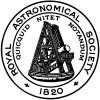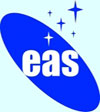The Galaxy and its satellites
Principal contact: M-R. Cioni (m.cioni@herts.ac.uk )
Organisers: M-R. Cioni (Hertfordshire, UK), R. Ibata (Strasbourg, France)
The Milky Way and its Satellites remain, by far, our richest single source of information on the processes of galaxy formation and evolution; nowhere else in the Universe can we examine a galaxy and its constituents in such exquisite detail. With the advent of GAIA it is a safe prediction that, over the coming decade, studies of the Milky Way will take on a central role in astrophysics.
Thanks to several large wide-field surveys undertaken over the last few years, a wealth of new information about the structure of the Milky Way and its satellite population is already in-hand. Our Galaxy is turning out to be a complex structure, with unexpected sub-populations revealed almost wherever they are sought.
Recent analyses of the SDSS have unveiled numerous new satellites (and satellite remnants), which are turning out to be very exciting in particular due to their implications for dark matter: despite differing by 4 decades in stellar luminosity, the satellite galaxies appear to inhabit dark matter halos of similar mass. The suggestion that the largest satellites, the Magellanic Clouds, are just approaching the Milky Way for the first time has also challenged preconceptions about the history of interactions among the Local Group galaxies.
The session aims to review the recent progress in this area, and to discuss some of the challenges we are being faced with in the analysis of the vast datasets now at our disposal: How can we best extract the information about the galaxy formation process from the amalgam that the Milky Way now is? What complementary data is needed to achieve these goals? How should we prepare for GAIA?
Scientific Programme
| Wednesday 22nd April | ||
| 11:00 | The Challenge of Modelling the Galaxy in the Era of Gaia | James Binney |
| 11:20 | Surveying the Galaxy from the Ground and Space: the RAdial Velocity Experiment (RAVE) and Gaia | George Seabroke |
| 11:30 | The Nature of Runaway Stars Far from the Galactic Plane | Manuel Silva |
| 11:50 | The Local Group Satellite Galaxies: Testing Fundamental Physics | Pavel Kroupa |
| 12:10 | On Star Orbits in an Axially Symmetric Force Field | Slobodan Ninkovic |
| 12:20 | Lithium- 6 in metal-Poor Stars | Ana Elia Garcia Perez |
| 12:30 | Temperature Scales and the Lithium Problem | Adam Hosford |
| Wednesday 22nd April | ||
| 14:00 | Spectroscopy of the Milky Way's Dwarf Satellites | Matthew Walker |
| 14:15 | The Milky Way with SDSS: Mapping The Rosetta Stone of Galaxy Formation | Mario Juric |
| 14:35 | Chemical abundance patterns in the inner Galaxy: the Scutum Red Supergiant Clusters | Ben Davies |
| 14:50 | The Galactic Population of White Dwarfs from Photometric Surveys | Daniel Mortlock |
| 15:00 | SDSS, IPHAS and GALEX Photometry of Post-AGB Stars and Central Stars of Planetary Nebulae | Simon Weston |
| 15:10 | Photometric Mapping of the Outer Galactic disk using IPHAS A Stars | Stuart Sale |
| 15:20 | Disk-Halo Interaction in the Inner Milky Way: the Ophiuchus Superbubble and HI Clouds | Yurii Pidopryhora |










